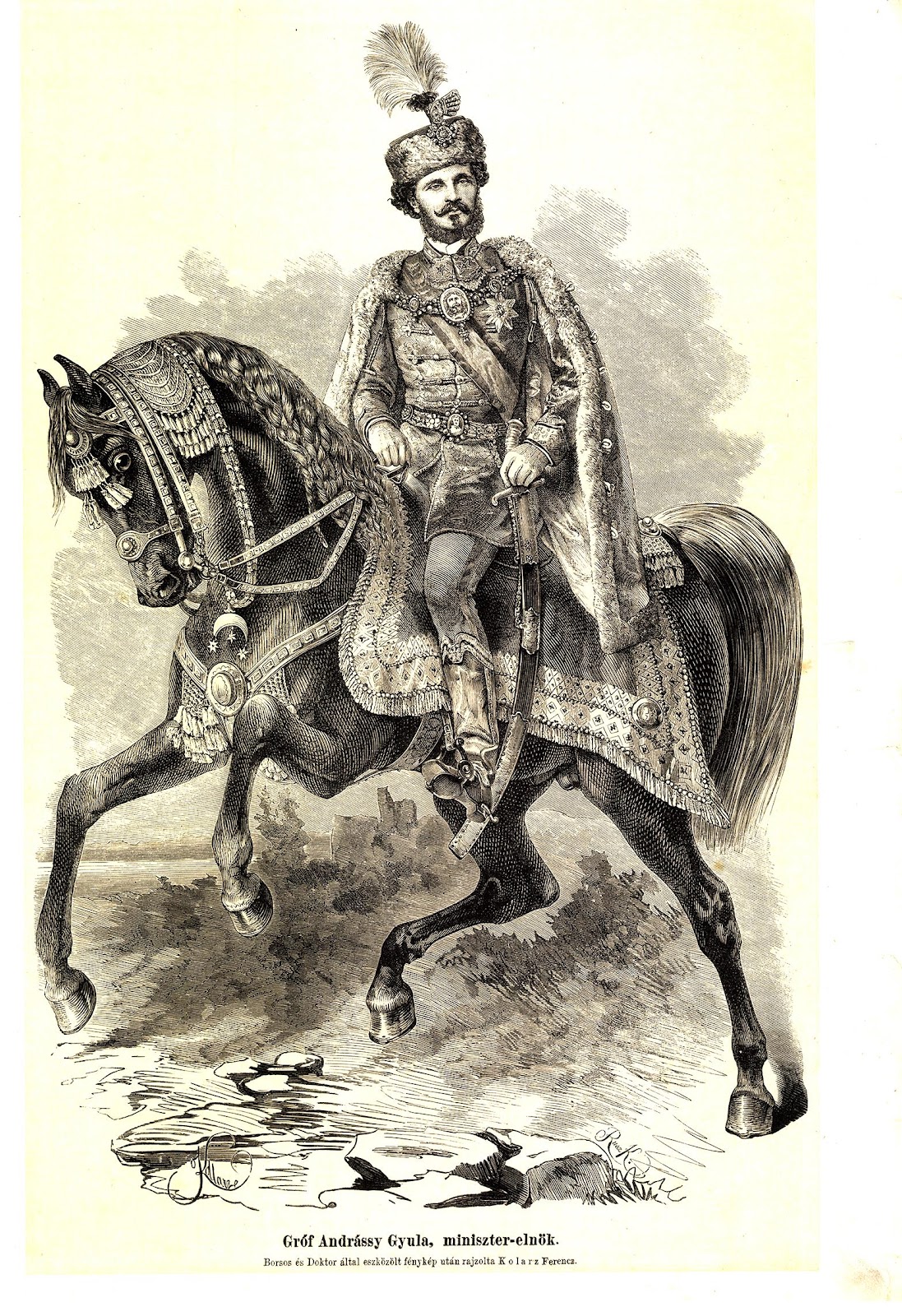Salvete Omnes,
 |
| Halzbant at the throat of Andrassy horse |
we have not seen equestrian monuments for a while.
If you ever visit Budapest there is a number of beautiful equestrian monuments in the Hungarian capital.
 |
| Old national Hungarian costume and Hungarian horse tack |
One of them is the monumental equestrian composition to count Guyla Andrassy, one of the most important Hungarian leaders of last 200 years.
Count Andrassy, born in 1823, served as a military officer during the Hungarian Revolution 1848-49, but did not participate in the battle and capitulation of the Vilagos (August 13, 1849) and the capitulation of the Hungarian army commanded by general Gorgey ( general Klapka commanded the last serious Hungarian army elements that surrendered at the fortress of Komarom on October 7, 1849). Andrassy had been sent as an envoy to the Ottoman court at Constantinople (today Istanbul). Thus he avoided being executed by the Hapsburgs, for he was sentenced in absentia to death and his portrait-effigy was hung in 1851.
Upon the amnesty to all participants of the Revolution and due to the political winds of change in the Hapsburg Empire he returned to Hungary and became a politician within the realm. Upon the creation of the Austro-Hungarian Empire in 1867, Andrassy became the Prime Minister of Hungary within the dual-state. His later political life, since 1871 when be became the foreign minister of the empire, was full of political upheavals and diplomatic 'warfare' eg - he changed the course of the Austrian politics from friendly towards Russian Empire to openly courting the newly established German empire and hostility against Russian politics in the Balkans and Austro-Hungarian Slavic provinces (former &present day Poland, western present day Ukraine, and present day Slovakia and Czechia) He died in 1893.
In 1904 Hungarian capital saw the unveiling in front of the Parliament the equestrian monument to Andrassy by then famous sculptor Gorgey Zala.
After 1945 and the occupation of Hungary by the Red Army, the Communists had the monument removed and melted. In 2016 Hungarian capital once again saw the monumental sculpture recasted and erected in the Parliament.
 |
| a very large shabraq |
 |
| perhaps a Shagya Arabian steed |
all images Wiki Commons
Valete









No comments:
Post a Comment